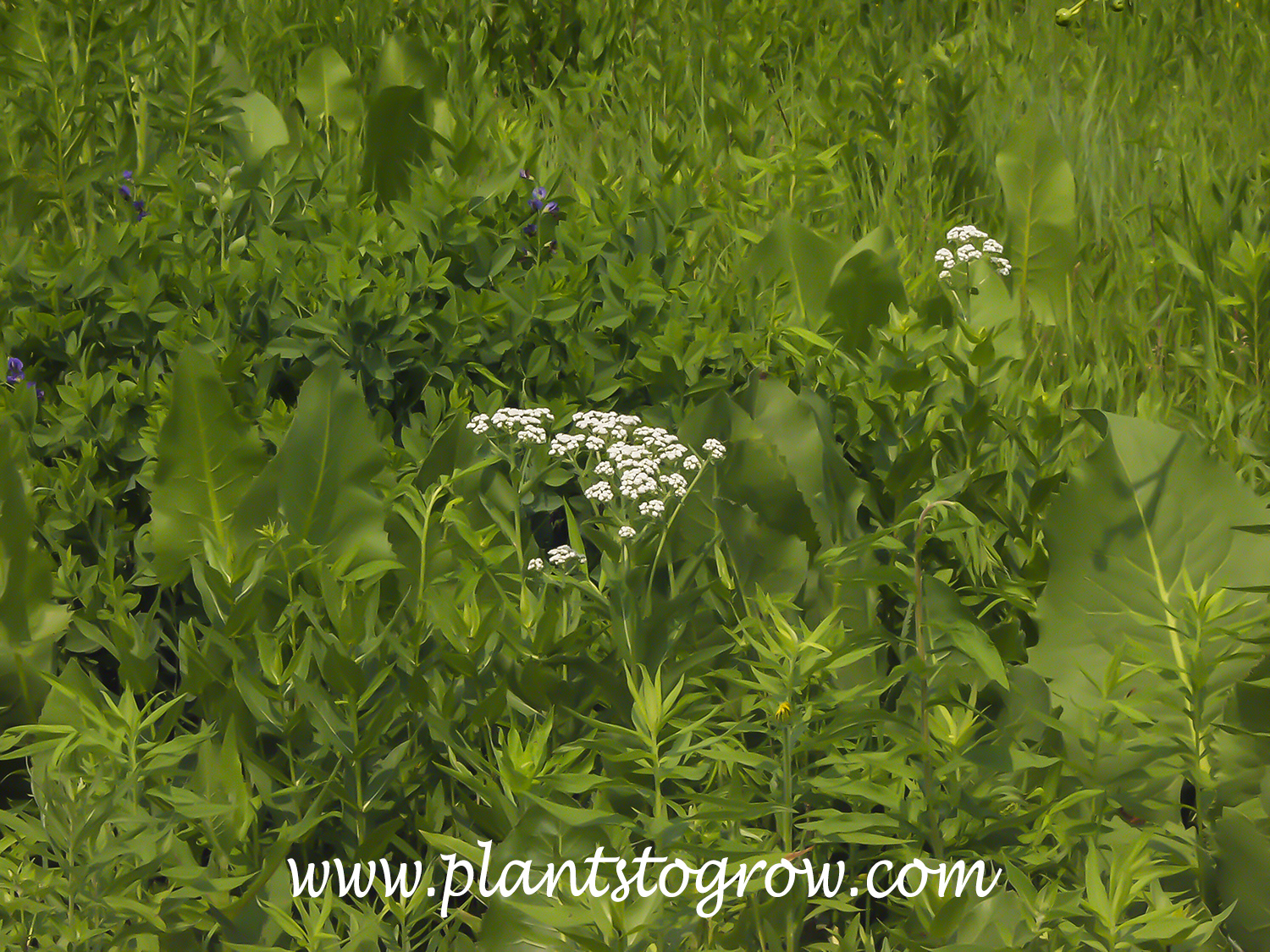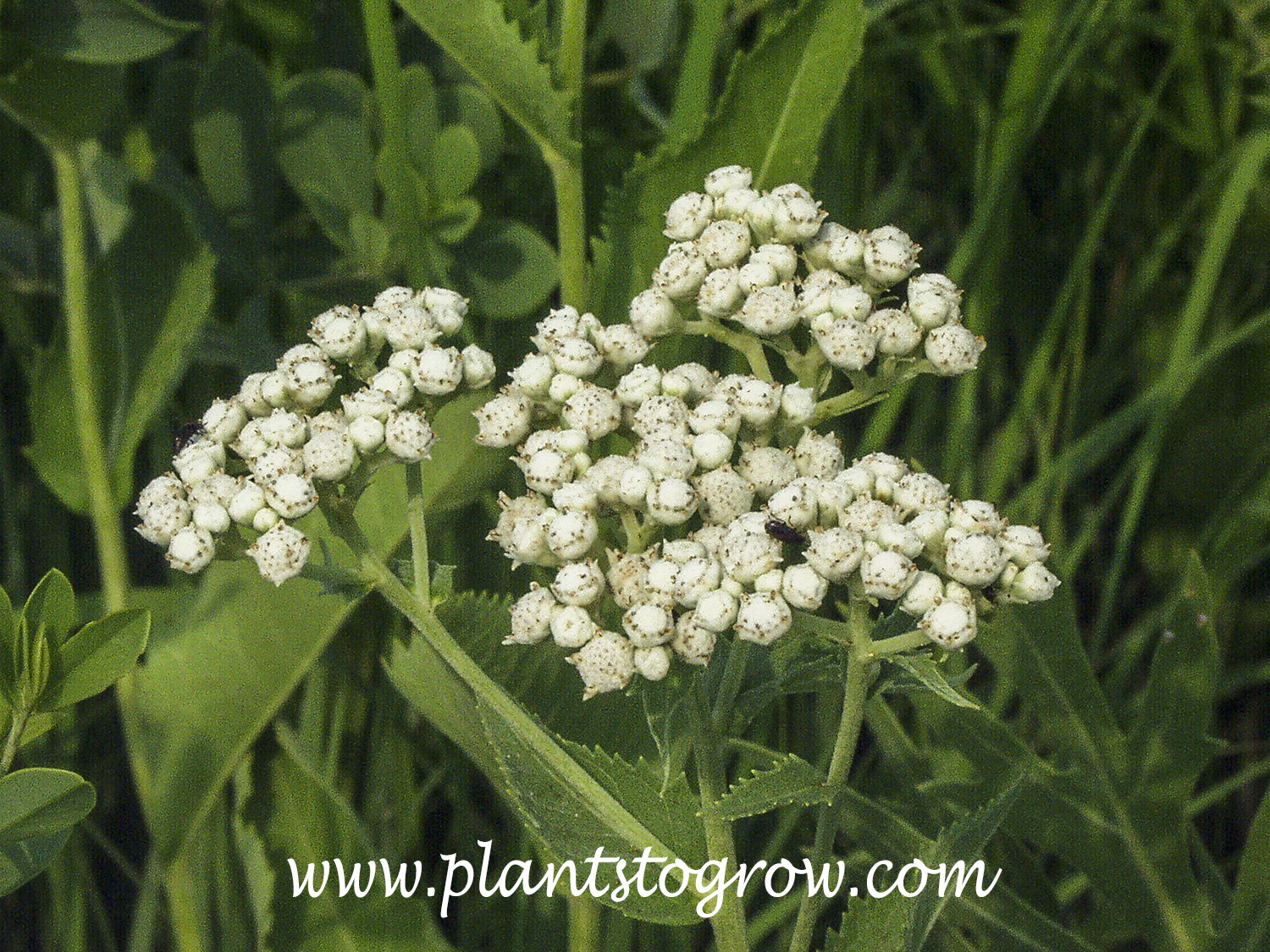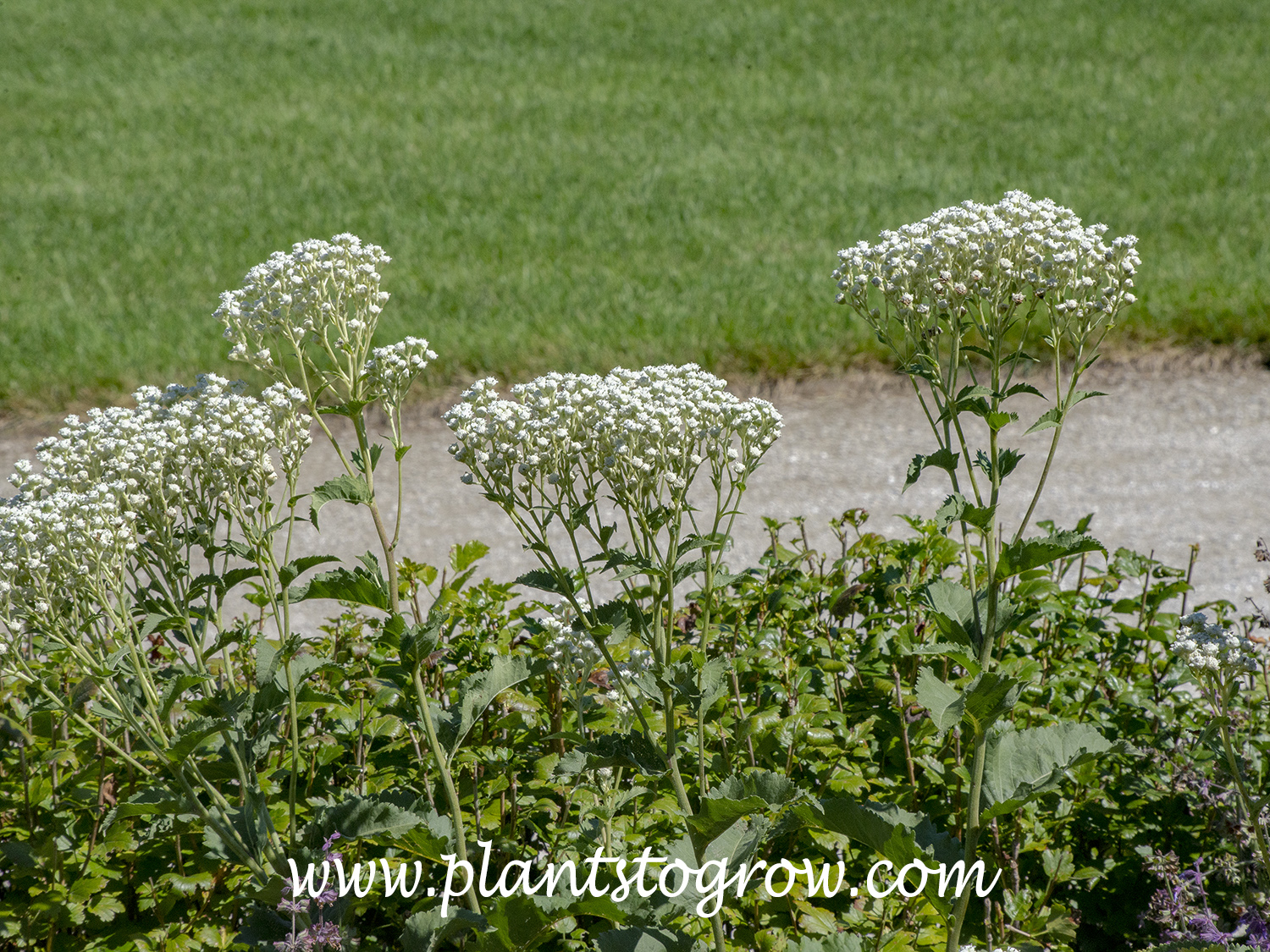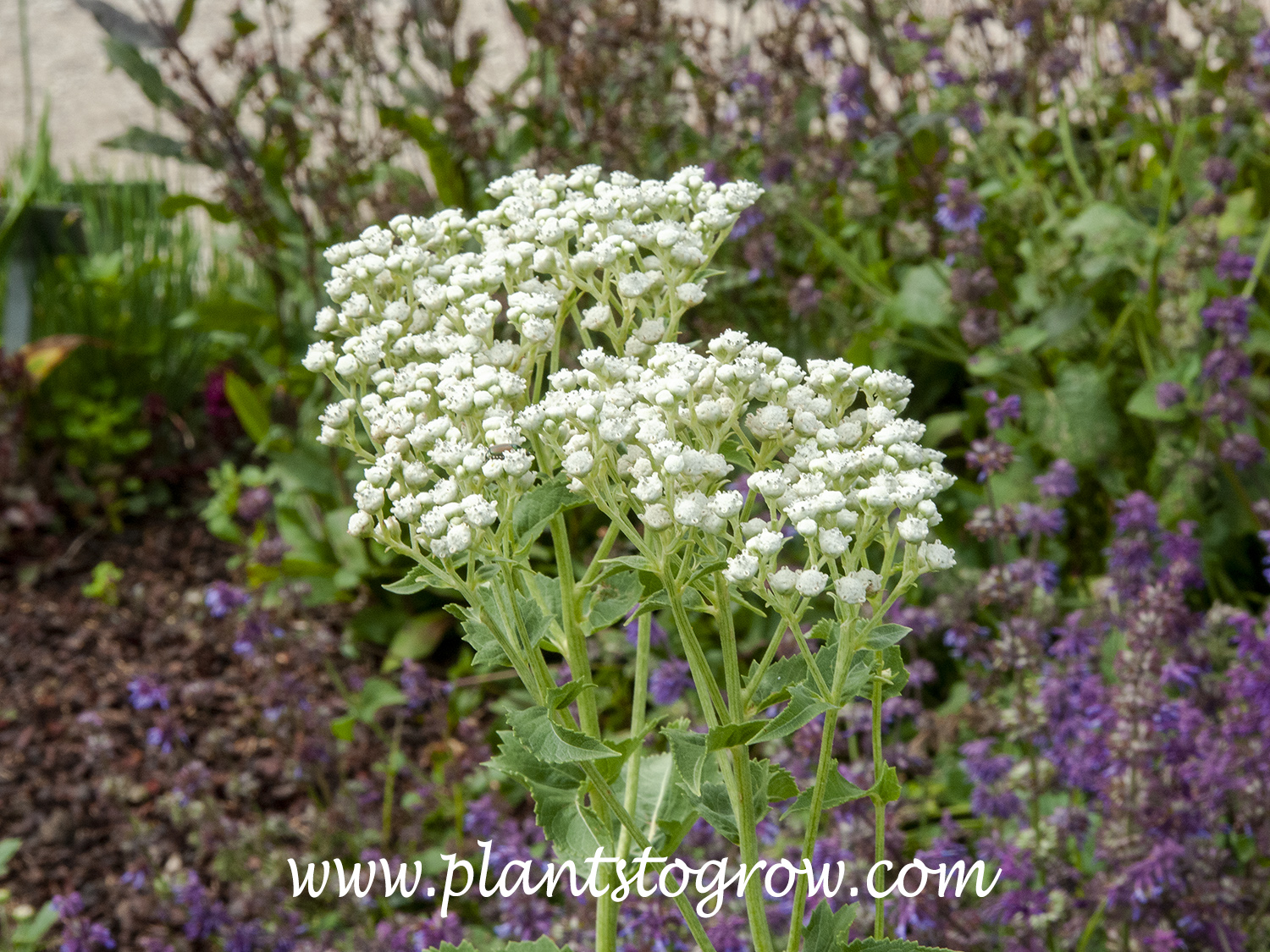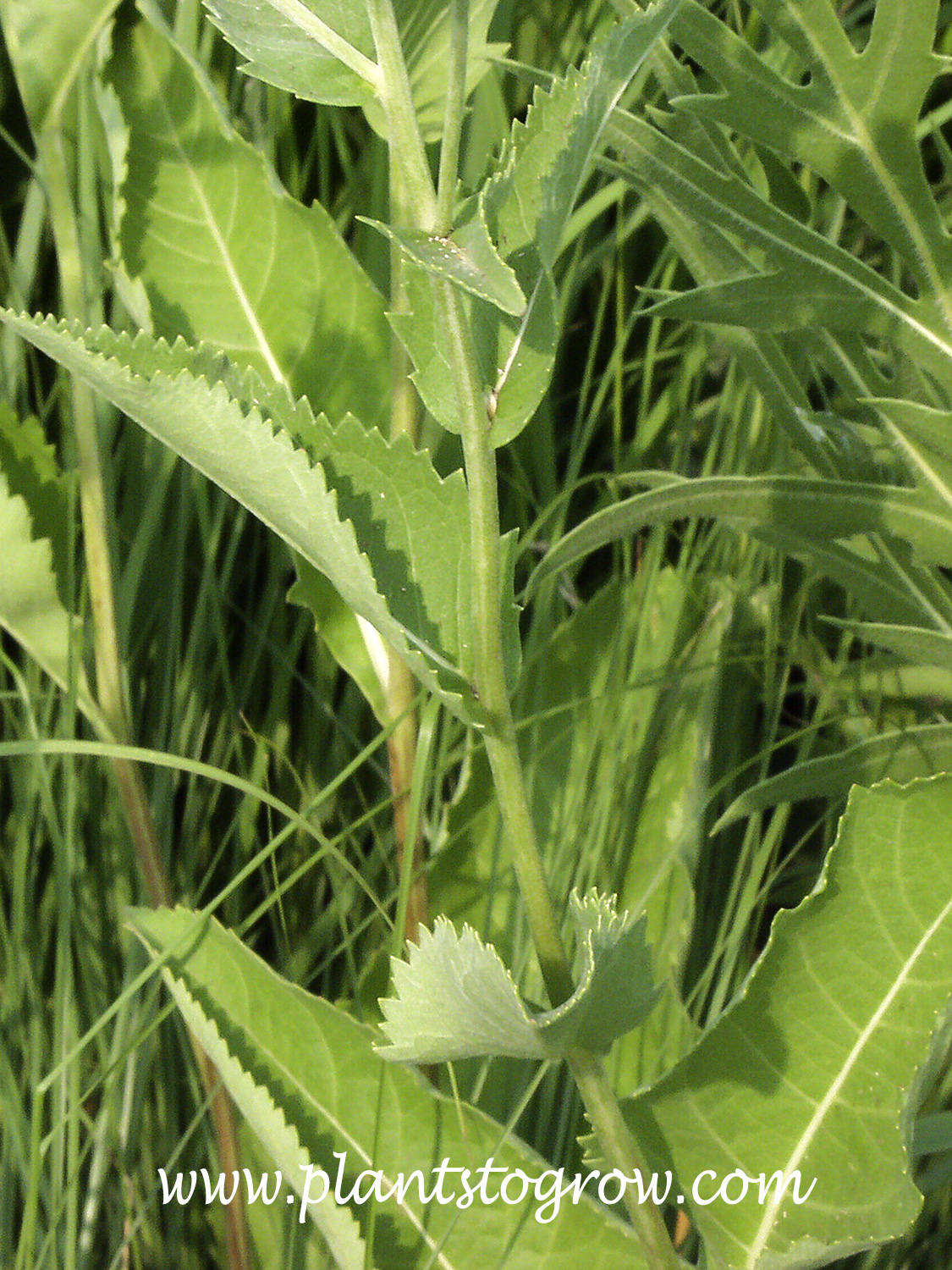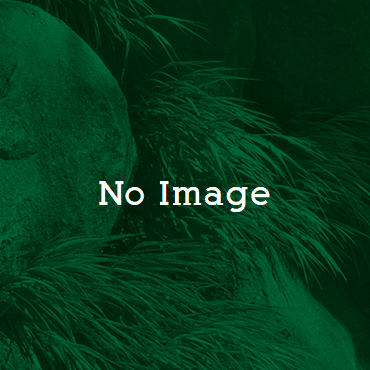| Description | Wild Quinine (Parthenium integrifolium) is a tall native plant growing in full sun. Has clusters of small white florets. |
|---|---|
| Plant Type | Wild Flowers |
| Hardiness Zone | 5 |
| Sunlight | full |
| Moisture | average |
| Soil & Site | average, found in mezic to dry prairies |
| Flowers | white, 1/3 inch, borne on nearly flat flower heads, mostly consist of disk florets, little if any scent |
| Fruit | black achene, lacks pappus (seed fluff) |
| Leaves | the largest leaves are basal, stem leaves are alternate, progressively smaller up the stem, sandpapery in texture, coarsely serrated |
| Stems | spreads by rhizomes |
| Roots | thick central taproot, aromatic roots |
| Dimensions | 20-40 inches tall |
| Propagation | seeds |
| Misc Facts | Genus name is derived from the Greek word parthenos, meaning virgin, referring to infertile disk flowers. A plant with many medical uses. (AKA: American Feverfew, Eastern Feverfew, Eastern Parthenium) |
| Notes & Reference | #56-Tall Grass Prairie Wildflowers (Doug Ladd), #100-Wildflowers of Wisconsin and the Upper Midwest (Merel Black and Emmet Judziewicz), #140-Prairie Plants of the UW Madison Arboretum (Theodore Cochrane, Kandis Elliot, Claudia Lipke) |

Cart


